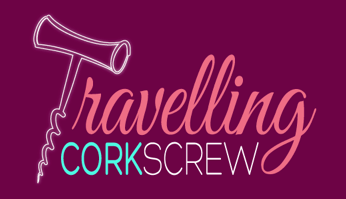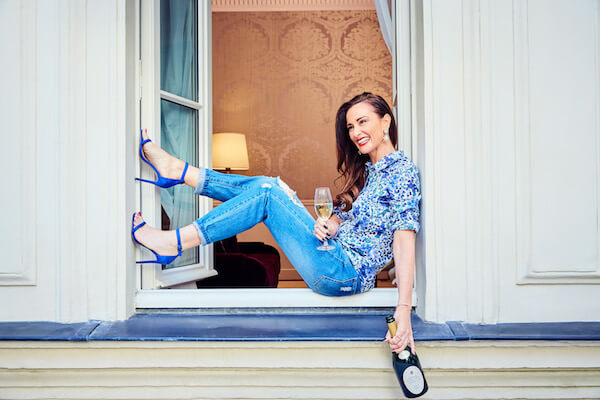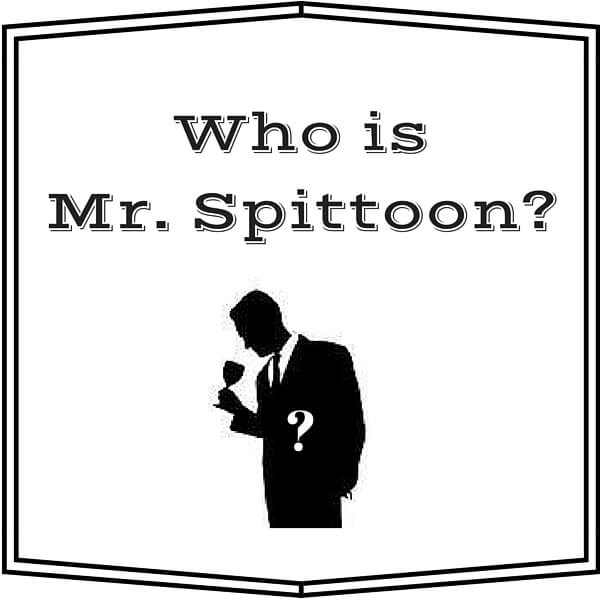Exclusive Q&A: The Champagne Dame – Kyla Kirkpatrick
Today on the blog we have a very special guest – the lovely Kyla Kirkpatrick, aka The Champagne Dame. With champagne comes passion, excitement and thirst – and it’s this thirst for champagne’s history that has driven Kyla to understand & learn about the world of champagne in-depth. With this knowledge in hand and thanks to all her adventures in the Champagne region of France, she shares with Australia her experiences through functions, events and masterclasses around the country. She even hosts ‘behind-the-scenes’ luxury tours to Champagne.
As you guys know, I love my champagne, so when I had the chance to chat with the Champagne Dame herself, I couldn’t wait. There are so many questions I wanted to ask, however I also wanted to find out from you guys what questions you had for Australia’s leading champagne lady. So below you’ll find questions from myself and also some of the TC followers on Facebook.
Grab a glass of bubbly and enjoy guys!
What/when was the moment you knew champagne was ‘your thing’?
It was 2005 and some people might see this as blasphemous, but it really wasn’t about the wine at that point! It was the history and story of Champagne that first captivated me. I read an article on Napoleon Bonaparte and how his personal story was connected to champagne, and I was hooked. I devoured every book I could read on Champagne, then moved to the region for an 8 month sabbatical to learn my craft.
I have always had a strong interest in history. When I was a young girl I used to read the bible, but I was atheist and grew up in an atheist family, so I always thought this was strange – even to myself. I realise looking back now that it was the connection to the past that I loved and I feel the same way with Champagne. It’s a connection to something bigger, a connection to the past but with such a strong vision for the future. It’s so much more than just consuming the bubbles. So much more!
When I host a champagne master class you could draw parallels with religious sermon actually! For two hours I am immersed – transfixed – and I take my guests with me on the journey into the intriguing story of champagne. You could say I am slightly obsessed!
There are a handful of educators around the world who specialise in this unique wine, Champagne, but we all offer something different…a different perspective. My education really centres on provenance, history of the region, the story of the wine and the wine maker and the importance of time and terroir.
What would be the 3 champagne houses you would recommend all champagne-lovers visit in France and why?
I recommend seeing all sides of Champagne – including small grower houses, medium-sized maisons and the Grand Marques, or large houses, so that you can see the production line in full swing.
I definitely recommend visiting the cellars of Pommery. They have some of the most impressive of all cellars in Champagne, with a plunging staircase taking you into a paradise full of slowly ageing champagne. The art installation within the cellars are incredibly impressive and the estate above ground was built by the clever Madame Pommery and is also worthy of a look.
Maison Billecart Salmon is a wonderful mid-sized family owned maison and if you are lucky enough to secure an appointment with the ever charming Antoine Roland Billecart, then expect the memory of that visit to last a lifetime. He has the style of a Britishman, the charm of a Frenchman and the sense of Humour of an Australian! The gardens are delightful and the barrel room is quite impressive. Here you learn the art of making precious champagne in their ultra clean production facility. We are lucky enough to dine with Antoine each year on our Insider’s Champagne Tour and guests always leave smiling with delight.
To understand the Process of champagne production I recommend paying a visit to the Co-Operative Nicolas Feuillate. Their bottling line is running almost all year round and they run an excellent tour, which explains in detail each stage of the creation of champagne.
What is your favourite under $100 champagne and why?
I tend to always have Phillipe Fourrier Blanc de Blancs in my fridge for guests. This is a classy, well made champagne with a great balance of body, structure and acidity. The 100% Chardonnay cuvee is made by a lovely family producer in the Aube, in the south of Champagne. It is really well priced and always impresses my guests.
What is the most memorable champagne you have ever tasted and why?
You can imagine that this is a difficult question for me to answer as I have had many memorable champagnes and champagne experiences! When I first moved to Champagne in 2005 and I was dividing my time between Paris, Champagne and the French Riviera, I would often be treated to pretty serious (and expensive!) champagnes by my hosts. This would often occur in nightclubs, bars and places of immense noise, heightened activity and sensory goings on. And do I remember any of these champagne experiences in detail? No! The overloaded sensations of the room drowned out the champagne. So now, if I am going to drink something special like rare or aged champagne, I let it make my occasion special and not the other way around. I drink it quietly, somewhere simple with someone I love. That’s it! No big groups, no fancy locale and that makes the experience and the champagne soooo much more memorable.
Back in my early career when I was working at Luis Vuitton Moet Hennessy, I once enjoyed a 30-year-old bottle of Dom Perignon Enotech in the vineyards of Champagne. It was in the middle of the night with no sound, a sky full of stars and a cigar. That memory and feeling still stays with me today.
What’s the biggest misconception about champagne in your opinion?
The biggest misconception in Australia is that champagne is overpriced. It’s not. If anything, champagne is too cheap in our country and contrary to many people, I dislike seeing champagne on sale. There is a much lower margin on champagne then on prosecco and cava.
Champagne vineyards are home to the most expensive land in the world, the most expensive grapes in the world. Champagne has the most technical wine making process to create the wine, and then ages for longer than just about any wine on the planet! The margin is tiny and growers are certainly not driving around in Porsches. Every dollar spare goes back into harvest and production.
Spend $10 more per bottle and buy a grower or mid-sized family owned champagne brand from a quality independent bottle shop. Forget about buying into the big chains who bully their clients into cheap purchasing rates, then bastardise the value in store.
What are your favourite foods to enjoy with champagne?
Truthfully, I eat most foods with champagne but I think my favourite at the moment is Korean food. It can be quite intense in flavour profile so pick your dish.
I don’t like soup, sauces or anything sloppy with Champagne. Champagne has crunch, direction and structure. I also like to see similar textures in my food when I am pairing. So for example if I am serving champagne with duck, I like the duck to have crispy skin.
Question from Katie.G: How long does an opened bottle of champagne last in the fridge and do you have any tips on how to keep it as long as possible?
Depends on the quality of the Champagne! The only way to assist with the bottles preservation is to use a hermetic bottle stopper, which will seal the top of the bottle completely – put your spoons away folks – this is an urban myth!
I would say next day to finish the bottle is fine, but on a quality small grower champagne that may have had extended lees ageing, I have come back to bottles in my fridge a few days later and they have been perfectly fine!
Question from Liz.S: What’s the best way to pour champagne? You see some people pour it into a standing glass and let the bubbles settle, others pour it like a beer into a tilted glass to have minimum “bubble up”
If you are using the correct glass which is a large tulip shape or a white wine glass and only pour a small portion of champagne into the glass – only enough to reach the point in the glass where it begins to bow (the most bulbous point) – you will not need to tilt the glass and pour to the side. Only in a narrow flute do the bubbles swell up to the top and spill over the edge. I never, never want to see people drinking champagne out of a flute, or you will undo all the great work, toil and time that the winemaker has put into making his incredibly complex, yet delicate cuvee.
Question from Jasmine.G: What is the best way to store champagne, lying down or upright?
This is a great question and one I am not really certain of the answer! Traditionally we store our bottles lying down in a place that must be dark, cool and with no temperature fluctuations or vibrations. However, there was a whisper in Champagne circles, and it may have come from the Champagne Society that champagne may in fact age better standing upright! As you can imagine this is controversial as every cellar including the winemakers in France are designed to lay the bottles down. I have not seen any further official papers on this, but I too would love to know the answer. I may need to conduct an experiment to answer this question categorically. Come back to me in 5 years please!
Question from Kim.T: Champagne corks are cylindrical before they go into the bottle, so what’s the reason behind the cork cage and hood in order to turn the corks into a mushroom top essentially?
The eventual shape of the cork is purely consequential due to production techniques used in champagne. As the bottom part of the cork is compressed to fit within about 1 inch of the bottleneck, the remainder of the cork sits outside the neck. The pressure inside the bottle sits at around 6 bars and over time pushes the cork slightly, but as it has nowhere to go it forms the classic champagne cork shape that we all know.
Lastly a big thank you to Kyla for answering our questions. I don’t know about you guys, but I can’t wait to pop a bottle of champagne soon, very soon! Make sure to check out The Champagne Dame website and follow Kyla on Facebook, Instagram and Twitter.


